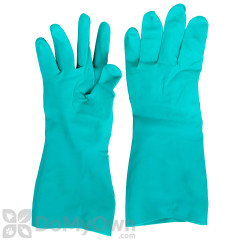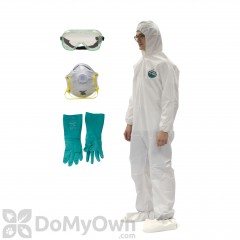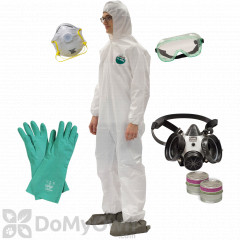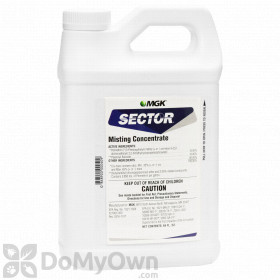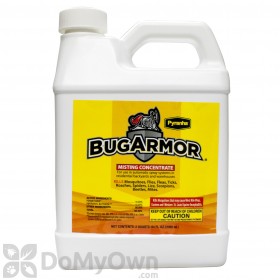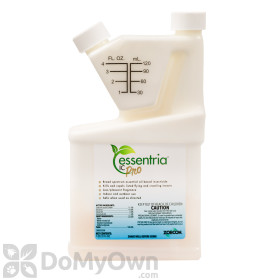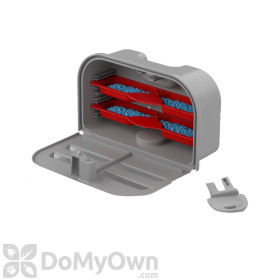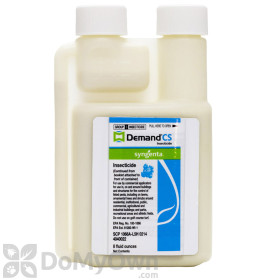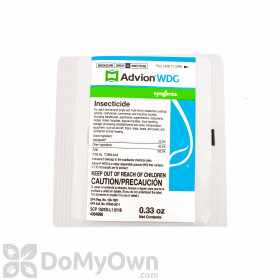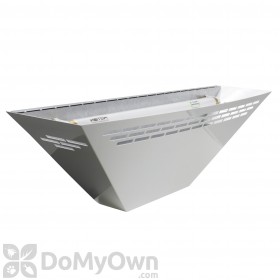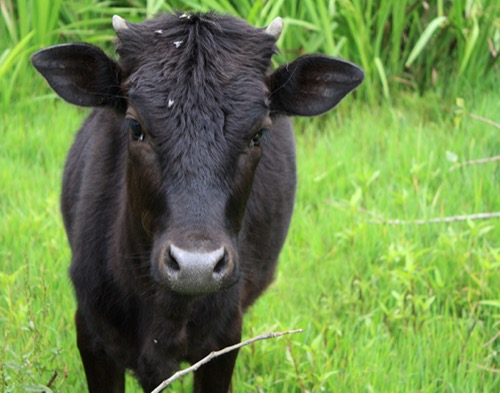
For as long as people have been raising livestock commercially, controlling flies has been a top priority for farmers. Fly infestations in livestock facilities lead to a loss of production, underweight newborns, and in some cases the death of animals, all impacting farmers financially.
Now, as many live-well communities are centered around community farms and neighborhoods are being built near livestock facilities, the risk of pathogens spread by flies to people make controlling flies a public health priority as well. Flies can invade nearby homes, creating infestations in residential areas in addition to livestock facilities.
Read this guide to learn more about livestock flies, including:
What are Livestock Flies?
Livestock flies are flies that feed off the bodily fluids or the food of livestock animals like cattle, poultry, horses, and swine. These flies prefer to remain close to their food source, so they will be found either on animals or nearby.
There are four types of livestock flies commonly found in the United States. At first glance, they may look similar, but there are some distinct differences between each, especially in their behavior, to help you identify them.
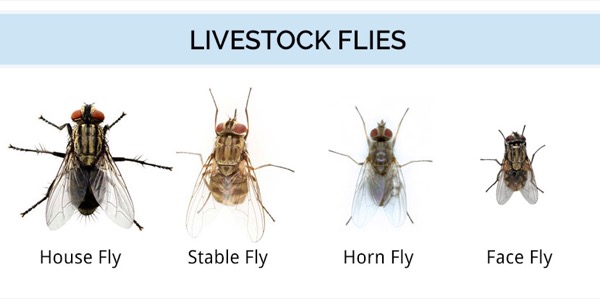
House Flies
- Have four abdominal stripes and checkered gray and black stomachs with yellow sides
- Have spongy, non-biting mouth parts
- The most common livestock fly, especially around swine
- Are more attracted to animal feed and the organic debris found in livestock facilities than the animals themselves. Often found near dumpsters and trash cans, stagnant water, drainage areas, manure pits, litter, and animal feeding areas and food storage.
Stable Flies
- Have a brown-gray coloring with a green iridescent sheen and 7 circular black spots on their stomachs
- Have biting mouth parts
- Feed off animal blood. Commonly found on the lower legs of livestock animals, especially cattle.
- When not feeding on animals, will be found resting on facility walls or in hay (but not manure). Immature stable flies are most commonly seen near bales of hay in pastures.
Horn Flies
- Look very similar to house flies, gray and black with an iridescent sheen, but are half the size
- Have sucking mouth parts to feed on animal blood
- Are commonly found on the backs of cattle but will move to the sides and stomach of animals during the hottest parts of the day
- Will face their heads downward with their wings at a 45-60 degree angle from their body when resting on the animal
- Rarely leave their host animal, but when they do, they often move to manure, where they will lay their eggs
Face Flies
- Have gray and black stipes on their upper backs with a patch of yellow near the bottom of their abdomen
- Are darker in color and larger than house flies
- Have non-biting mouth parts
- Feed off animal secretions around the head, neck, and eyes of livestock. They can spread infections and diseases, like pink eye, from animal to animal quickly.
- When they are not on the animal, they can be found on fence posts, barn walls, and on plants around the farm
How Do Livestock Flies Affect Animals?
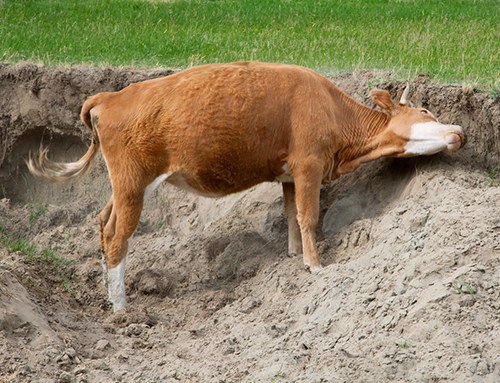
The effect of livestock flies on cattle, horses, sheep, and other livestock ranges, from irritation to disease.
When stable and horn flies suck the blood from animals, the animals react by changing their feeding and grazing patterns, stomping their feet, and shaking their heads. These actions burn calories, causing the animals to lose weight, which will hurt the bottom line in meat-raising facilities. The milk supply of animals can also change, and babies born to these animals may be underweight at birth and struggle to gain weight as they grow.
Face flies feed off the excretions of animals and can easily spread infections like pink eye from animal to animal within a facility.
House flies can carry pathogens that distress horses and infect the people that work on the farm.
Flies affect both animals and people to sometimes devastating results. Treating to control flies is essential. Fortunately, there are several options available.
Livestock Fly Treatment Options
There are many treatment options available for livestock flies. When choosing a treatment, read the label of any product you will be using to be sure it is labeled for the type of fly or flies you are trying to control and the animal you will be treating. Some products control house flies but not stable flies, while some cover multiple fly types.
Fly Traps, Fly Lights, and Baits

Basic control of house flies is easy with traps, lights, and baits.
Fly traps are opened from their packaging (or quickly assembled) then placed as instructed around livestock facilities. Flies are lured to these traps using pheromones, then stick to the glue within the trap.
Fly baits lure flies toward the bait, then kill flies quickly. Baits can be scattered around a property, placed in bait stations, or mixed with water and painted on surfaces around the barn, coop, or pen.
Fly light traps control flies within a small radius, lured by the UV light and sticking to the glue board trap inside. Use inside offices, barns, and areas where using insecticides may be difficult. Learn more about fly lights here.
Fly ribbons and fly tape are sticky strands of fabric that can be placed throughout barns and livestock facilities to catch flies.
These solutions are great for fast fly control but will not solve the source of fly infestations or their eggs. They are best used with insecticides and space sprays for well-rounded fly control. Biting flies may not be controlled with these fast control products, but will instead respond to insecticides and space sprays.
ULV and Space Sprays
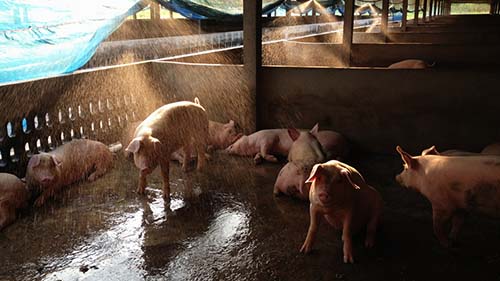
Space sprays allow multiple animals and large spaces to be treated quickly. Some insecticide sprays can be applied directly to animals using a backpack sprayer or large-capacity sprayer, others are sprayed near or over animals through misting systems, often using Ultra Low Volume insecticides, also known as ULV insecticides.
ULV and space sprays work best on house flies and stable flies.
Pour-On Insecticides
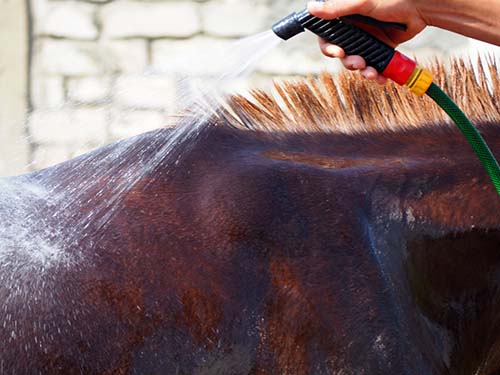
As their name suggests, pour-on insecticides are literally poured on cattle and other animals, typically down their backs and on their faces. The insecticides will dry and then kill flies on the animal and repel new flies from landing.
Some pour-on insecticides can also be applied using a back rubber, which cows like to use to groom themselves. Knowing the approximate weight of your animals is important to determining how much pour-on insecticide is needed for each animal.
Pour-ons are most effective on stable flies, horn flies, and face flies, as those flies spend the most time in contact with animals.
Premise and Perimeter Sprays
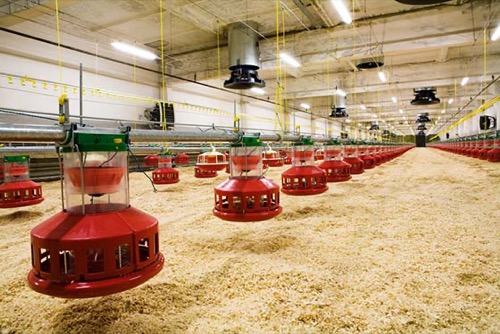
Premise and perimeter sprays control flies and other insects around the property where animals are housed. Just as homeowners will treat the perimeter of their homes to prevent pests from invading, premise and perimeter sprays will help repel pests and flies from barns, coops, pens, and stables.
Premise sprays will work best against house and stable flies as these flies are most likely to be found in animal housing facilities.
Pro Tip
The product label will instruct where you can and cannot spray in the presence of animals. Some products can be sprayed directly on an animal, some can be sprayed near animals, and others are to be sprayed when animals are not present. Read our guide to using insecticides on animals for more information on what to look for on your label.
Insect Growth Regulators
Flies have a very short lifecycle, taking only 1-3 weeks to evolve from eggs to full adults. Within one warm season (spring to fall) dozens of lifecycles of flies can occur. It is vital to not only treat adult flies, but to also treat the manure where their eggs grow and to use an Insect Growth Regulator (IGR) to prevent eggs from hatching and adult flies from procreating. Some insecticides include IGRs in their formulas, while others will require an IGR to be mixed in when applied.
Before using any insecticide around animals, be sure to read the product label. Make sure the product is compatible with your animal and determine if your animal can be in the area being treated.
Have questions about which product and treatment is best for your situation? Give our customer service team a call at 866-581-7378 for more information.
